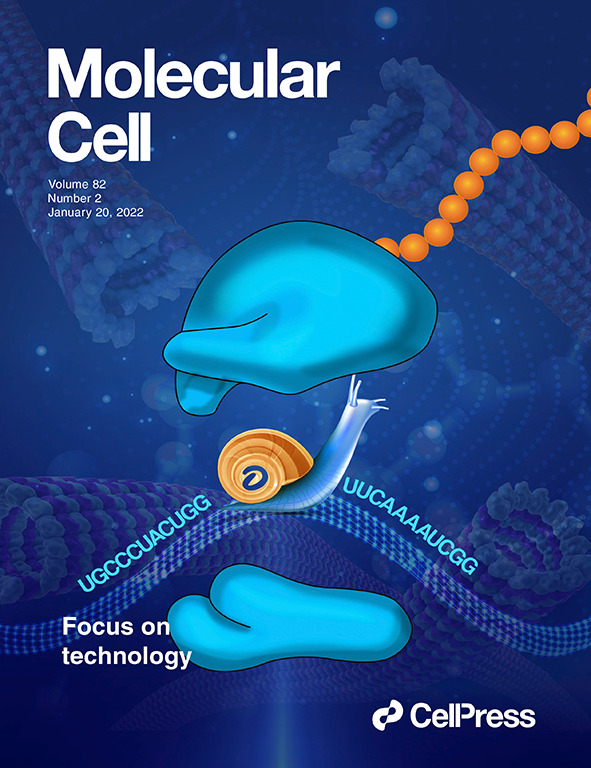Sequencing CURLY LEAF-associated RNAs in Arabidopsis revealed prevalent intergenic RNAs from the nuclear mitochondrial sequence
IF 3.7
3区 生物学
Q2 BIOCHEMISTRY & MOLECULAR BIOLOGY
引用次数: 0
Abstract
Polycomb group (PcG) proteins play key roles in development by repressing thousands of targets through histone modifications. However, how PcG is recruited to specific targets is poorly understood. In Arabidopsis, certain noncoding RNAs are necessary for recruiting the PcG protein CURLY LEAF (CLF) to its target sites. However, RNAs associated with CLF have not been analyzed on a genomic scale; thus, it is unknown whether long noncoding RNA (lncRNA)-mediated PcG recruitment is a widespread mechanism. Here, we systematically searched for CLF-associated RNAs by RNA immunoprecipitation followed by deep sequencing. We identified 1,299 genic and 138 intergenic regions that produced CLF-associated mRNAs and putative lncRNAs, respectively. The genes producing CLF-associated RNAs are depleted in PcG targets, carry active chromatin marks, and are highly expressed, suggesting that CLF may have a nonspecific or promiscuous RNA-binding affinity, similar to animal PcG proteins. Notably, a significant portion of the CLF-associated lncRNAs is derived from the nuclear mitochondrial sequence, which is extensively marked by H3K27me3. These findings indicate that, while CLF-RNA interactions are widespread, they may not always correlate with PcG target sites, highlighting the complexity of PcG recruitment mechanisms in Arabidopsis.
对拟南芥 CURLY LEAF 相关 RNA 进行测序,发现了来自核线粒体序列的普遍基因间 RNA。
多聚胞小体(PcG)蛋白通过组蛋白修饰抑制数千个靶标,在发育过程中发挥着关键作用。然而,人们对 PcG 如何被招募到特定靶标还知之甚少。在拟南芥中,某些非编码 RNA 是将 PcG 蛋白 CURLY LEAF(CLF)招募到其目标位点的必要条件。然而,与CLF相关的RNA尚未在基因组范围内进行分析,因此尚不清楚长非编码RNA(lncRNA)介导的PcG招募是否是一种广泛的机制。在这里,我们通过RNA免疫沉淀法和深度测序法系统地搜索了与CLF相关的RNA。我们发现了1299个基因区和138个基因间区,它们分别产生了CLF相关的mRNA和推测的lncRNA。产生CLF相关RNA的基因在PcG靶标中的含量很低,携带活性染色质标记,并且表达量很高,这表明CLF可能与动物PcG蛋白类似,具有非特异性或杂乱的RNA结合亲和力。值得注意的是,与CLF相关的lncRNA有很大一部分来自核线粒体序列,该序列被H3K27me3广泛标记。这些研究结果表明,虽然CLF-RNA的相互作用很普遍,但它们并不总是与PcG靶位点相关,这凸显了拟南芥中PcG招募机制的复杂性。
本文章由计算机程序翻译,如有差异,请以英文原文为准。
求助全文
约1分钟内获得全文
求助全文
来源期刊

Molecules and Cells
生物-生化与分子生物学
CiteScore
6.60
自引率
10.50%
发文量
83
审稿时长
2.3 months
期刊介绍:
Molecules and Cells is an international on-line open-access journal devoted to the advancement and dissemination of fundamental knowledge in molecular and cellular biology. It was launched in 1990 and ISO abbreviation is "Mol. Cells". Reports on a broad range of topics of general interest to molecular and cell biologists are published. It is published on the last day of each month by the Korean Society for Molecular and Cellular Biology.
 求助内容:
求助内容: 应助结果提醒方式:
应助结果提醒方式:


